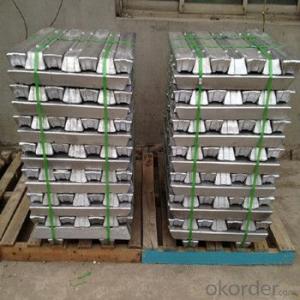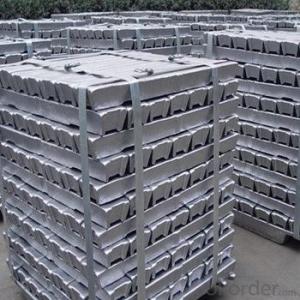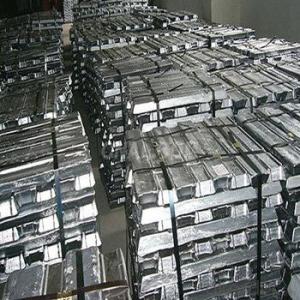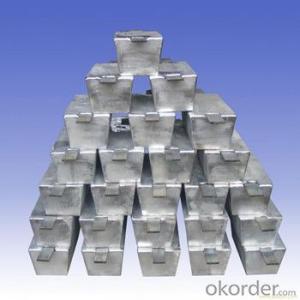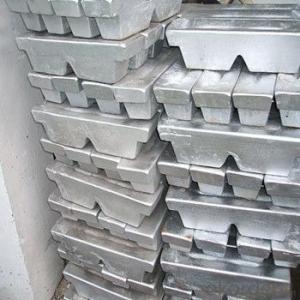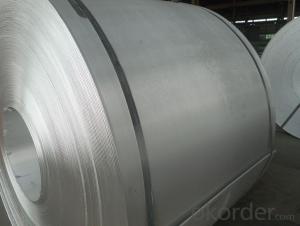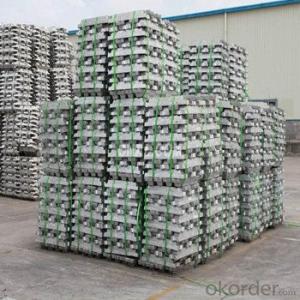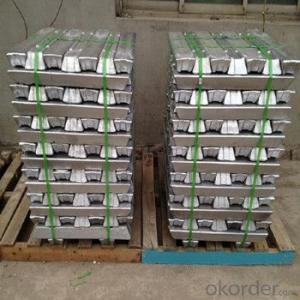Aluminum Pig/Ingot With Good Quality And Good Pirce
- Loading Port:
- China main port
- Payment Terms:
- TT OR LC
- Min Order Qty:
- 1000 m.t.
- Supply Capability:
- 100000 m.t./month
OKorder Service Pledge
OKorder Financial Service
You Might Also Like
Pure Aluminum Pig/Ingot Used for Industry
1.Structure of Aluminum Pig/Ingot
A material that has been cast into a shape in order to be transported and processed easier than in an unprocessed form. An ingot is typically rectangular in shape, which allows it to be stacked. Ingots are most commonly associated with metals, with ingots of gold held in the vaults of banks and brokerages being popular images.
Aluminum Ingot is with the AL as the main chemical composition.Aluminum Ingot is used for industry,such as automobile,pinning and weaving,electron broadly and so on. Aluminum Ingot has the following advantages: easy control and operation, fast melting.
2.Main Features of the Aluminum Pig/Ingot
•High Purity
•Easy control and operation
•High strength
•Fast melting
•Competitive price
•Best Service
3.Aluminum Pig/Ingot Images
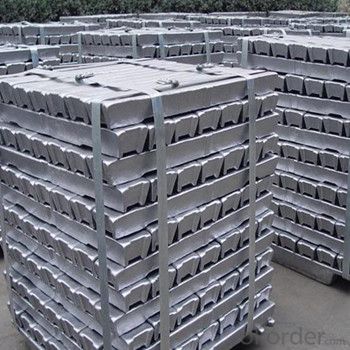
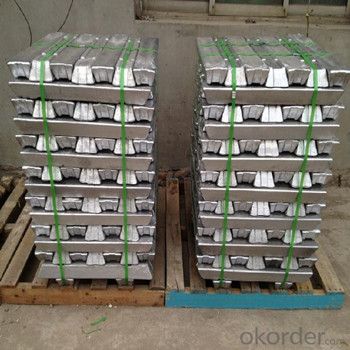
4.Aluminum Pig/Ingot Specification
Grade | Chemical Composition % | |||||||||
Al≥ | impurities ≤ | |||||||||
Si | Fe | Cu | Ga | Mg | Zn | Mn | others | Sum | ||
Al99.9 | 99.90 | 0.50 | 0.07 | 0.005 | 0.02 | 0.01 | 0.025 | - | 0.010 | 0.10 |
Al99.85 | 99.85 | 0.80 | 0.12 | 0.005 | 0.03 | 0.02 | 0.030 | - | 0.015 | 0.15 |
Al99.7 | 99.70 | 0.10 | 0.20 | 0.010 | 0.03 | 0.02 | 0.030 | - | 0.030 | 0.30 |
Al99.6 | 99.60 | 0.16 | 0.25 | 0.010 | 0.03 | 0.03 | 0.030 | - | 0.030 | 0.40 |
Al99.5 | 99.50 | 0.22 | 0.30 | 0.020 | 0.03 | 0.05 | 0.050 | - | 0.030 | 0.50 |
Al99.00 | 99.00 | 0.42 | 0.50 | 0.020 | 0.03 | 0.05 | 0.050 | - | 0.050 | 1.00 |
5.FAQ of Aluminum Pig/Ingot
We have organized several common questions for our clients,may help you sincerely:
①How about your company?
A professional factory which foucs on producing the aluminum pig,can meet customers' requiement to the quality and grade.The quality also have been accepted by customer.Already got the good reputation among the customers.It have gotten lot of much experience.The facrtory has the professional Technical Worker and the advanced equipments for production.Beside,it has the profesional teams to operate the whole proess for exporting.OEM service is availble and welcome.The items have beedn exported around the world,and have been acceptable among the customers,and have gotten the good reputation already.No matter from the quality,price and service,can be guaranteed for the cusgtomers.High purity and diffent grade are available.
②How to guarantee the quality of the products?
We have established the international advanced quality management system,every link from raw material to final product we have strict quality test;We resolutely put an end to unqualified products flowing into the market. At the same time, we will provide necessary follow-up service assurance.
③How long can we receive the prod rking days, We will arrange the factory delivery as soon as possible. The pecific time of receiving is related to the state and position of customers.Commonly 7 to 10 working days can be served.
- Q:How are aluminum ingots used in the production of sporting goods?
- The unique properties and advantages of aluminum ingots make them widely used in the production of sporting goods. One reason is that aluminum ingots are both lightweight and durable, which makes them ideal for manufacturing sports equipment like baseball bats, tennis rackets, and golf clubs. Their lightweight nature allows for increased swing speed and maneuverability, enhancing athletes' performance in these sports. Another advantage of aluminum ingots is their corrosion resistance. This ensures that sporting goods made from aluminum can withstand exposure to moisture and harsh environments. This is especially beneficial for outdoor sporting goods like bicycles, camping equipment, and fishing rods. The corrosion resistance reduces the need for frequent maintenance and replacement, making aluminum ingots more cost-effective in the long run. In addition, aluminum ingots can be easily molded and shaped into various designs, allowing manufacturers to create innovative and ergonomic sporting goods. For example, they are commonly used in the production of bicycle frames and components, which enables customized designs that enhance stability, aerodynamics, and overall performance. Furthermore, aluminum ingots have excellent heat conductivity, making them suitable for the production of sports equipment that requires efficient heat dissipation. This is seen in skis and snowboards, where aluminum cores are used to regulate temperature and provide optimal flexibility and control on the slopes. In conclusion, aluminum ingots are crucial in the production of sporting goods due to their lightweight, durable, corrosion-resistant, and easily moldable properties. These characteristics enable manufacturers to create high-performance, long-lasting, and innovative sporting equipment for various sports and outdoor activities.
- Q:How much is the power consumption to smelt a ton of aluminium ingot?
- Theoretically, 1 tons of aluminium ingots are melted down, consuming 500 degrees
- Q:How much capital do I need to invest in the recycled aluminium ingot?
- Interests can also, but you have to look at how solid ingots sell, I mainly sell coal and carbon to the factory with multiple points of contact, but you want me to say how much the solid would ask how.
- Q:How are aluminum ingots used in the production of aerospace components?
- Aluminum ingots play a crucial role in the production of aerospace components due to their unique properties and characteristics. These ingots are melted down and refined to create high-quality aluminum alloys that are specifically designed to meet the demanding requirements of the aerospace industry. One of the main reasons aluminum is widely used in aerospace manufacturing is its low density. Aluminum is a lightweight material, which helps reduce the overall weight of the aircraft, resulting in improved fuel efficiency and increased payload capacity. This is particularly crucial in the aerospace industry, where every kilogram saved translates into significant cost savings and operational advantages. Another key advantage of aluminum ingots is their excellent strength-to-weight ratio. By alloying aluminum with other elements such as copper, magnesium, or zinc, aerospace engineers can create alloys that possess exceptional strength and structural integrity while maintaining a low weight. These alloys are then used to manufacture various components, such as airframes, wings, fuselage sections, and structural supports, which need to withstand extreme conditions and stresses during flight. Furthermore, aluminum ingots offer exceptional corrosion resistance, making them ideal for aerospace applications. Aircraft are subjected to harsh environments, including exposure to moisture, saltwater, and temperature fluctuations. Aluminum alloys, derived from these ingots, possess a natural oxide layer that provides a protective barrier against corrosion, ensuring the longevity and durability of the aerospace components. Additionally, aluminum ingots can be easily cast, machined, and formed into intricate shapes and designs, allowing for the production of complex aerospace components with high precision. This versatility is essential in the aerospace industry, where intricate and custom parts are required to meet the specific needs and requirements of different aircraft models. In summary, aluminum ingots are essential in the production of aerospace components due to their lightweight nature, excellent strength-to-weight ratio, corrosion resistance, and versatility in manufacturing processes. By utilizing aluminum ingots and their derived alloys, aerospace manufacturers can achieve the perfect balance between performance, durability, and efficiency in their aircraft, contributing to the advancement and safety of the aerospace industry.
- Q:What industries use aluminum ingots?
- The industries that commonly use aluminum ingots include automotive, aerospace, construction, packaging, and electrical industries.
- Q:Can aluminum ingots be used in 3D printing?
- Yes, aluminum ingots can be used in 3D printing. Aluminum is a commonly used material in additive manufacturing due to its lightweight, high strength, and excellent thermal conductivity. However, instead of directly using aluminum ingots, a process called powder bed fusion, specifically selective laser melting (SLM) or electron beam melting (EBM), is utilized. In this process, fine aluminum powder is spread in thin layers and selectively melted by a laser or electron beam, layer by layer, to create the desired 3D object. This allows for the production of complex geometries and precise parts with high strength and accuracy.
- Q:How can I extract aluminium ingots from cans?
- If you want to sell, small and medium-sized aluminum factory will generally buy, but if you do not remove other components, and direct sell cans on the price is not much difference. When you first start, you certainly have little experience. When you have industry experience, consider whether you want to expand or not, and most importantly, how much you know about the industry.
- Q:What can aluminium ingots do?
- It is with the alumina cryolite produced by electrolysis. There are two major types of aluminum ingot after industrial application: cast aluminum alloy and wrought aluminum alloy.
- Q:Could you tell me how to calculate the value of aluminum material? By weight or by length or by other means?
- By weight, like steel.Different materials of aluminum and aluminum prices are different, different shapes of the price is not the same.
- Q:How can the sustainability practices in aluminum ingot production be enhanced?
- There are several ways in which the sustainability practices in aluminum ingot production can be enhanced. Firstly, the adoption of cleaner and more energy-efficient technologies can greatly reduce the environmental impact of the production process. This could involve the use of renewable energy sources, such as solar or wind power, to power the production facilities. Upgrading equipment and machinery to more energy-efficient models can also help minimize energy consumption and reduce greenhouse gas emissions. Secondly, optimizing the recycling and reuse of aluminum scrap and waste materials can significantly reduce the need for virgin aluminum production. Implementing effective recycling programs and investing in advanced recycling technologies can ensure that a higher percentage of aluminum is recovered from end-of-life products and incorporated back into the production process. This not only conserves valuable resources but also reduces the energy-intensive extraction and refining processes associated with primary aluminum production. Thirdly, improving water management practices can contribute to enhanced sustainability in aluminum ingot production. Implementing efficient water conservation measures, such as recycling and reusing water within the production process, can help minimize water consumption. Additionally, implementing wastewater treatment systems to remove pollutants and contaminants from the discharged water can prevent water pollution and protect local ecosystems. Furthermore, promoting transparency and responsible sourcing practices in the supply chain can enhance sustainability in aluminum ingot production. This includes ensuring that the raw materials used in the production process, such as bauxite and alumina, are sourced from responsible and sustainable mining practices. Implementing traceability systems and certification programs can help verify the origin and sustainability of these materials, ensuring compliance with ethical and environmental standards. Lastly, engaging with stakeholders, including employees, local communities, and industry associations, can foster a culture of sustainability and drive continuous improvement in aluminum ingot production. This can involve regular training and awareness programs on sustainable practices, as well as collaborating with suppliers and customers to identify and implement innovative sustainability solutions. Overall, enhancing sustainability practices in aluminum ingot production requires a holistic approach that combines technological advancements, efficient resource management, responsible sourcing, and stakeholder engagement. By implementing these measures, the aluminum industry can minimize its environmental footprint and contribute to a more sustainable future.
1. Manufacturer Overview |
|
|---|---|
| Location | |
| Year Established | |
| Annual Output Value | |
| Main Markets | |
| Company Certifications | |
2. Manufacturer Certificates |
|
|---|---|
| a) Certification Name | |
| Range | |
| Reference | |
| Validity Period | |
3. Manufacturer Capability |
|
|---|---|
| a)Trade Capacity | |
| Nearest Port | |
| Export Percentage | |
| No.of Employees in Trade Department | |
| Language Spoken: | |
| b)Factory Information | |
| Factory Size: | |
| No. of Production Lines | |
| Contract Manufacturing | |
| Product Price Range | |
Send your message to us
Aluminum Pig/Ingot With Good Quality And Good Pirce
- Loading Port:
- China main port
- Payment Terms:
- TT OR LC
- Min Order Qty:
- 1000 m.t.
- Supply Capability:
- 100000 m.t./month
OKorder Service Pledge
OKorder Financial Service
Similar products
New products
Hot products
